目次
Craft Report
Handcrafted Kyoto Cushions, Preserving Tradition for Over a Century
In Gojo, Kyoto, Rakuchu Takaoka-ya has been crafting kangū—tools of relaxation such as cushions and bedding—for over 100 years. To this day, each piece is carefully made by hand, preserving the traditional skills passed down through generations.
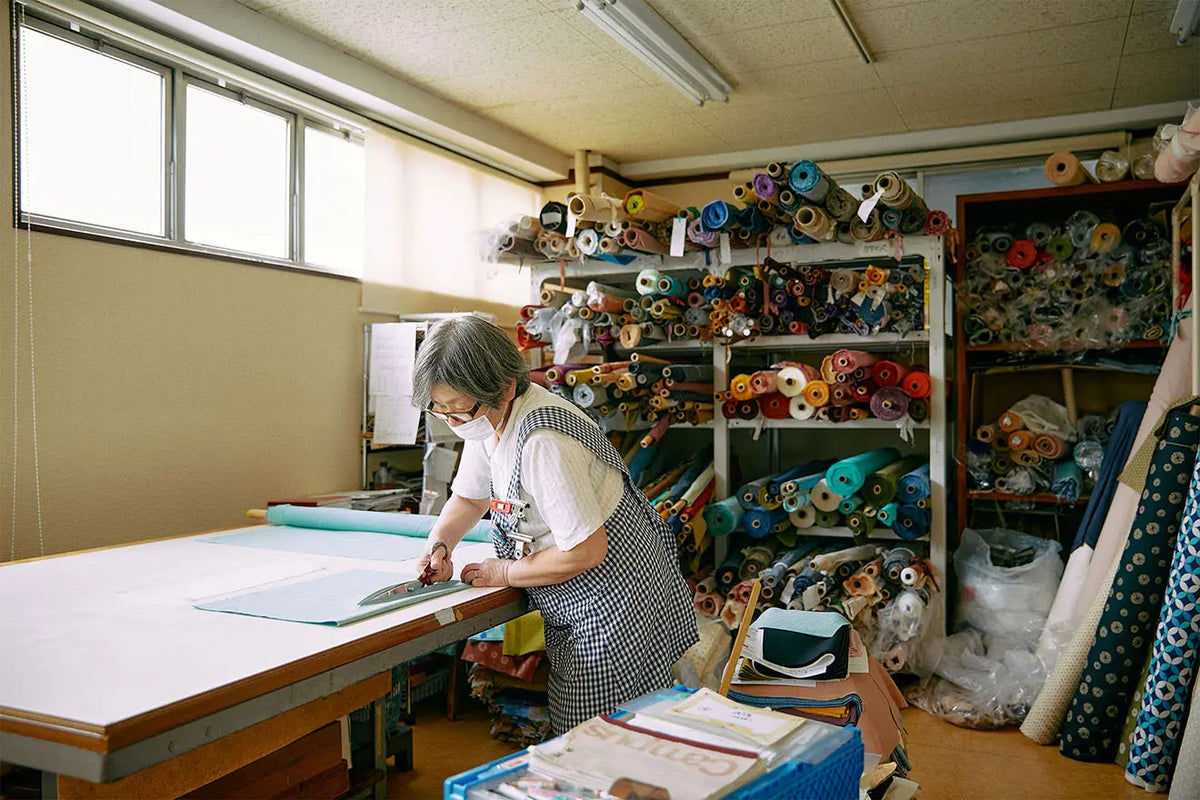
When the company was founded in 1919, leading kimono merchants were beginning to sell through department stores, and bedding, much like kimono, was commonly purchased by selecting the fabric and having it tailored. As the industry shifted to ready-made goods for display and sale, the current president’s grandfather established Takaoka Shoten as a bedding workshop for Kyoto Daimaru. The business was incorporated by the second generation in 1961.
Although demand for futons and cushions declined in postwar Japan under increasingly Westernized lifestyles, by the late 20th century people began to rediscover “what truly makes life comfortable and refined.” In response, Takaoka leveraged its traditions in futon and cushion making to propose a new, Japan-inspired Modern Wa lifestyle. In 1999, the brand Rakuchu Takaoka-ya was launched, placing cushions at its core to offer ease and relaxation through artisanal handwork.
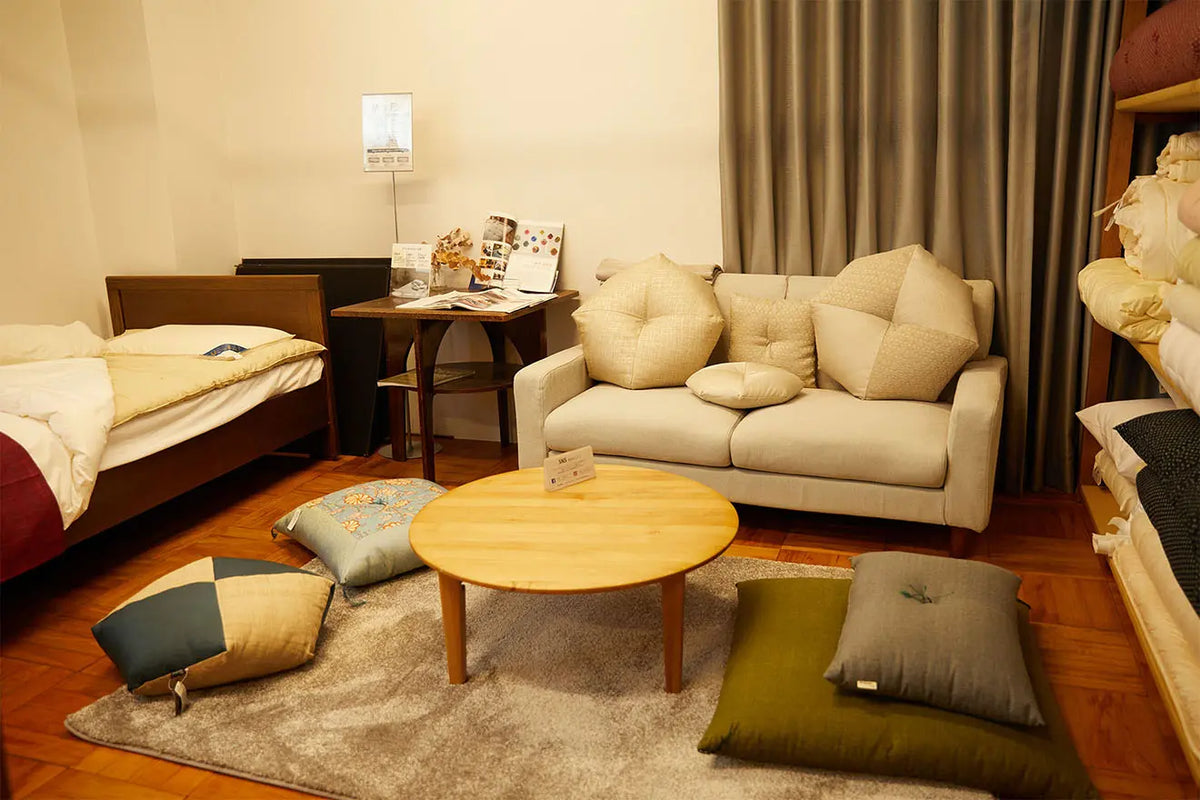

New Kangū: Designed for Comfort and Relaxation.
The brand coined the term kangū (literally, “tools of relaxation”) to describe its products. This concept was born when current president Koichiro Takaoka left his trading company job in 1980 to take over the family business, rethinking the role of cushions in daily life.
With fewer opportunities for people to sit on the floor, the cushion market had shrunk dramatically. Rather than clinging to the old model, Takaoka envisioned a new path: “If we can center our craft on beautiful handmade work, we can create something new.”
Reflecting on his own childhood memories of sprawling across three cushions to watch television, he realized cushions were used not only “to sit,” but “to relax.” From this idea came the new category of kangū. Today, products such as the Gorone series (“three-cushion comfort” for lying down) and the large, roun

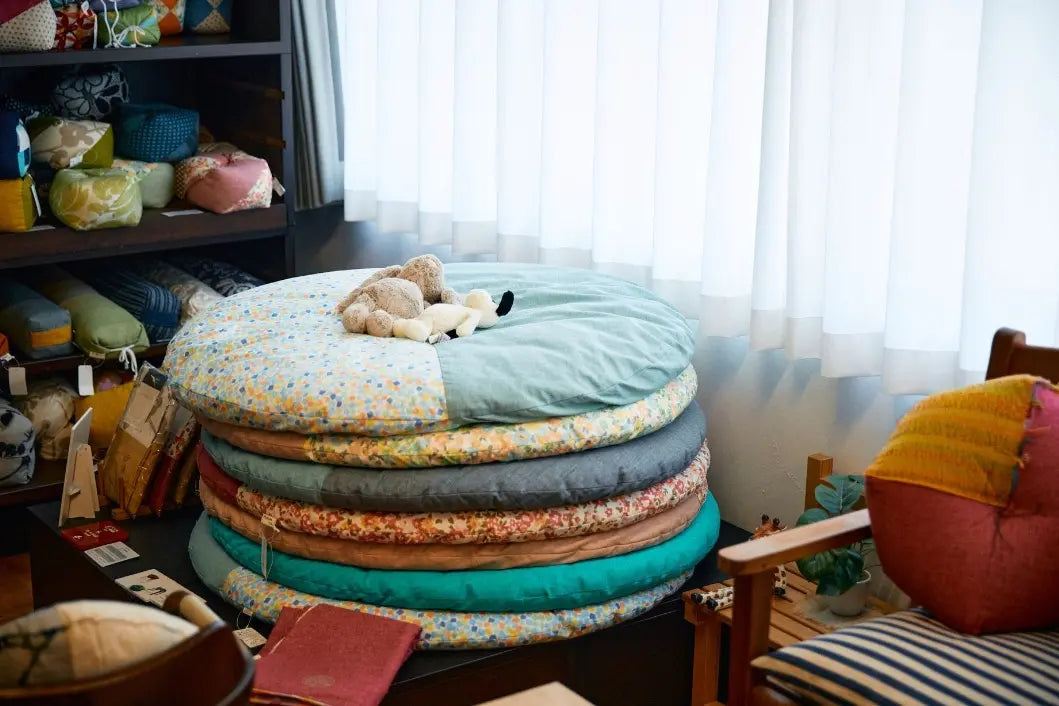
Senbei Cushion.
Ojami Cushion: A Beloved Favorite, Even in Luxury Hotels
One of the most popular creations is the Ojami Cushion, named after the Kansai word for beanbags used in children’s games. The idea combines the playful, octagonal form of a beanbag with the functionality of a cushion that raises the hips for easier sitting—even for those unused to floor seating.
Initially, evenly stuffing cotton into a cube-like form was a major challenge for craftsmen accustomed to flat bedding. After a year of trial and error, Takaoka’s team perfected the octagonal cushion: both beautiful in form and comfortable to use.
The Ojami Cushion works not only for floor seating, but also as a backrest for chairs, or as a cushion for sofas and beds. Its four-panel design allows colors and patterns to be mixed, suiting both Japanese and Western interiors. Today, these cushions even grace the rooms of luxury hotels.
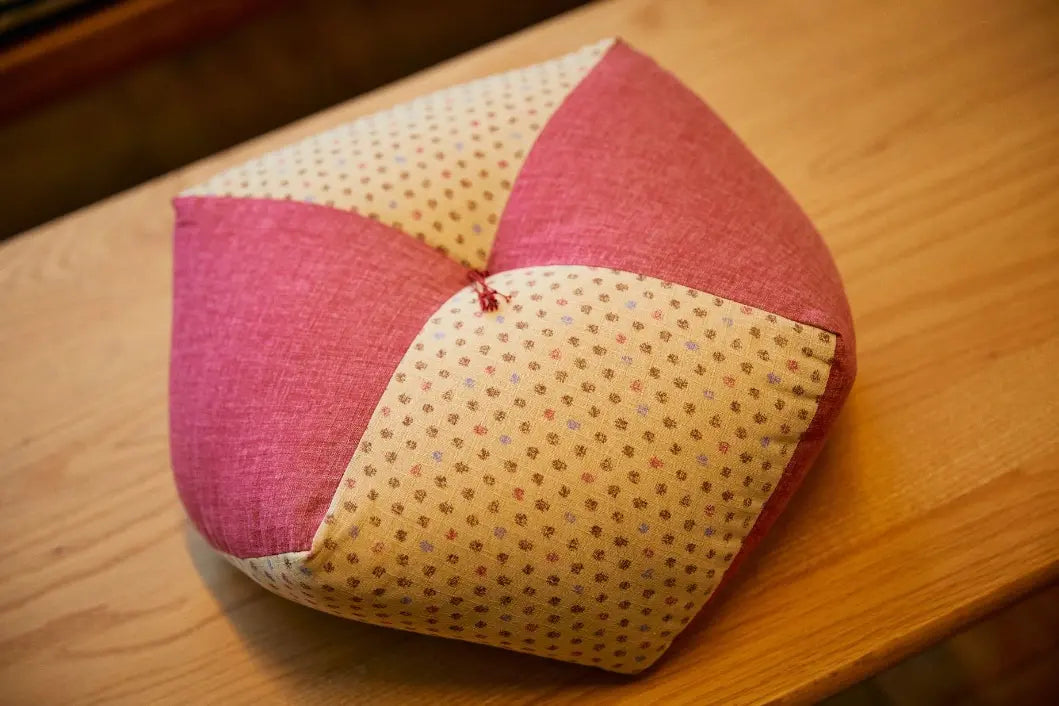
Ojami Cushion.
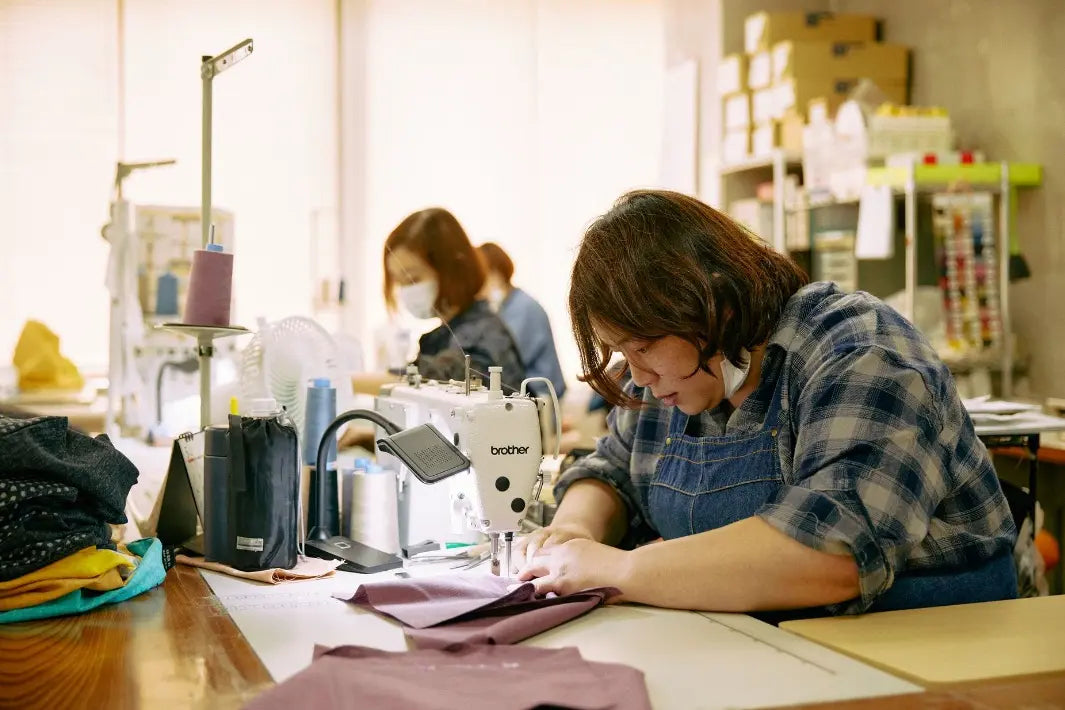
Craftsmanship and Materials: The Secret to Comfort.
Each Ojami Cushion contains as much cotton as a lightweight comforter. The critical step is wata-ire—the careful layering of cotton stuffing by skilled hands to maintain firmness, prevent unevenness, and ensure long-lasting comfort.
Since the 1960s, the company has used a 70% cotton, 30% polyester blend, originally developed by a major department store and fiber manufacturer. This mix combines the firmness of cotton with the softness of polyester, while reducing weight. To further prevent sagging, a specially developed urethane core is added.
Another essential technique is kuke—a traditional sewing method that hides seams for a refined finish. This requires deep knowledge of different fabrics, and reflects the experience and skill of Takaoka’s artisans.
Customers can also choose from over 50 fabric options, including hand-dyed murasome textiles with unique shading effects, creating more than a thousand possible combinations for a truly personal cushion.
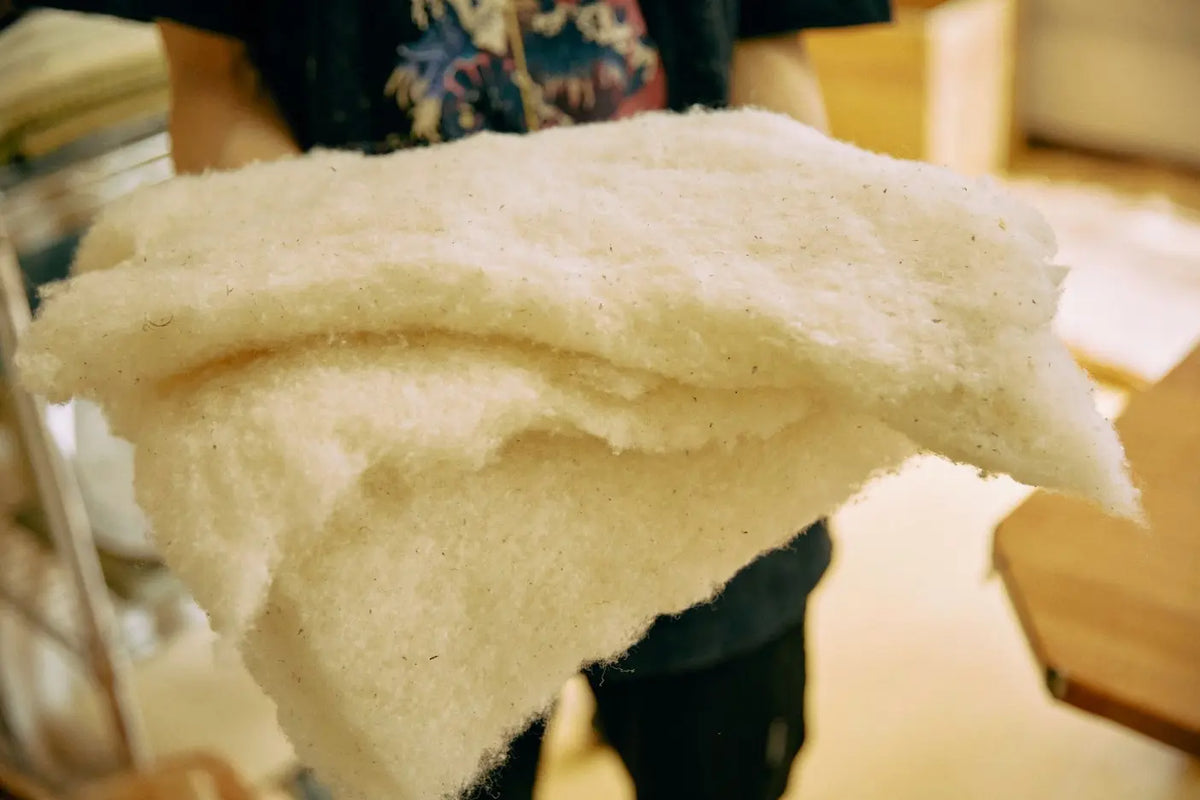
Each Ojami Cushion contains as much cotton as a lightweight comforter.
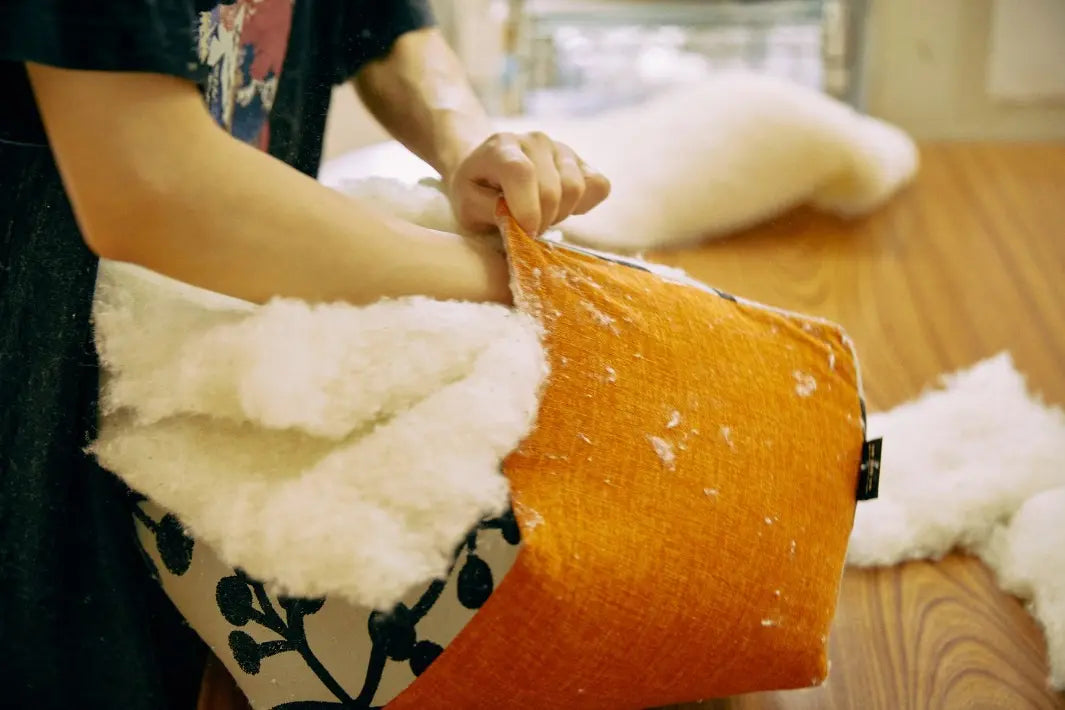
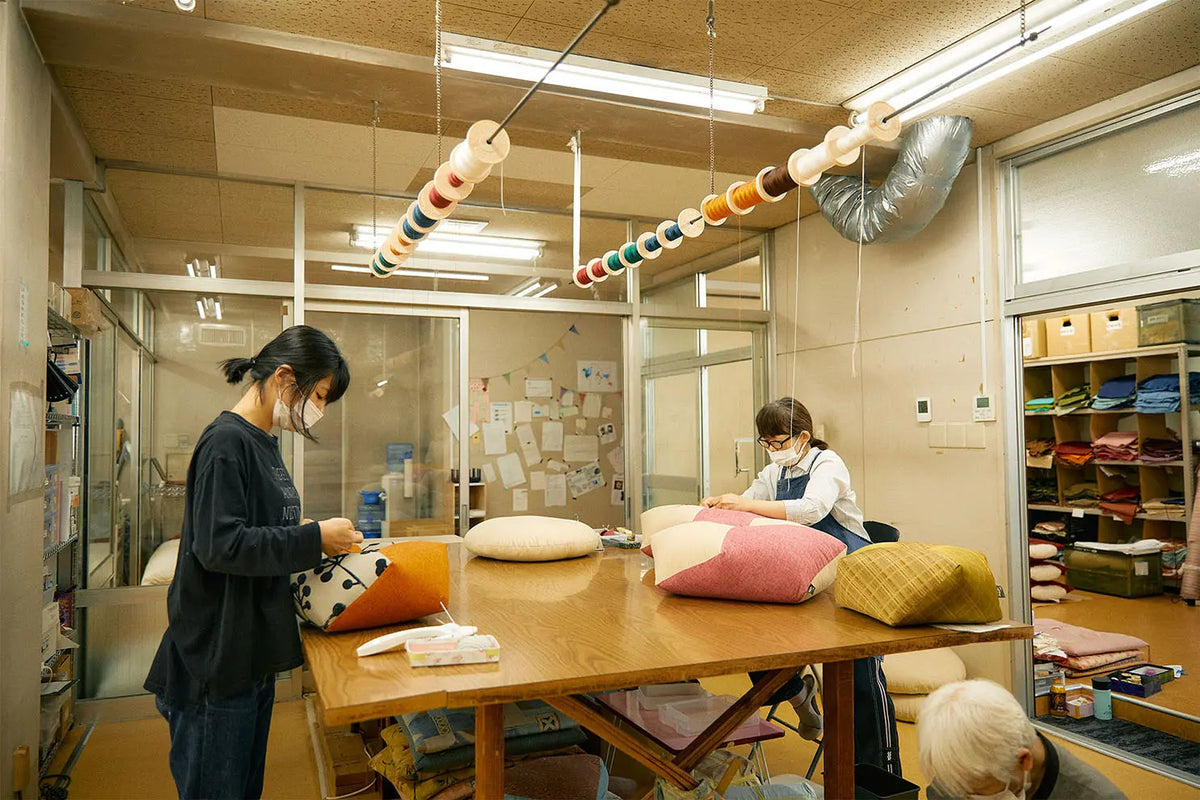
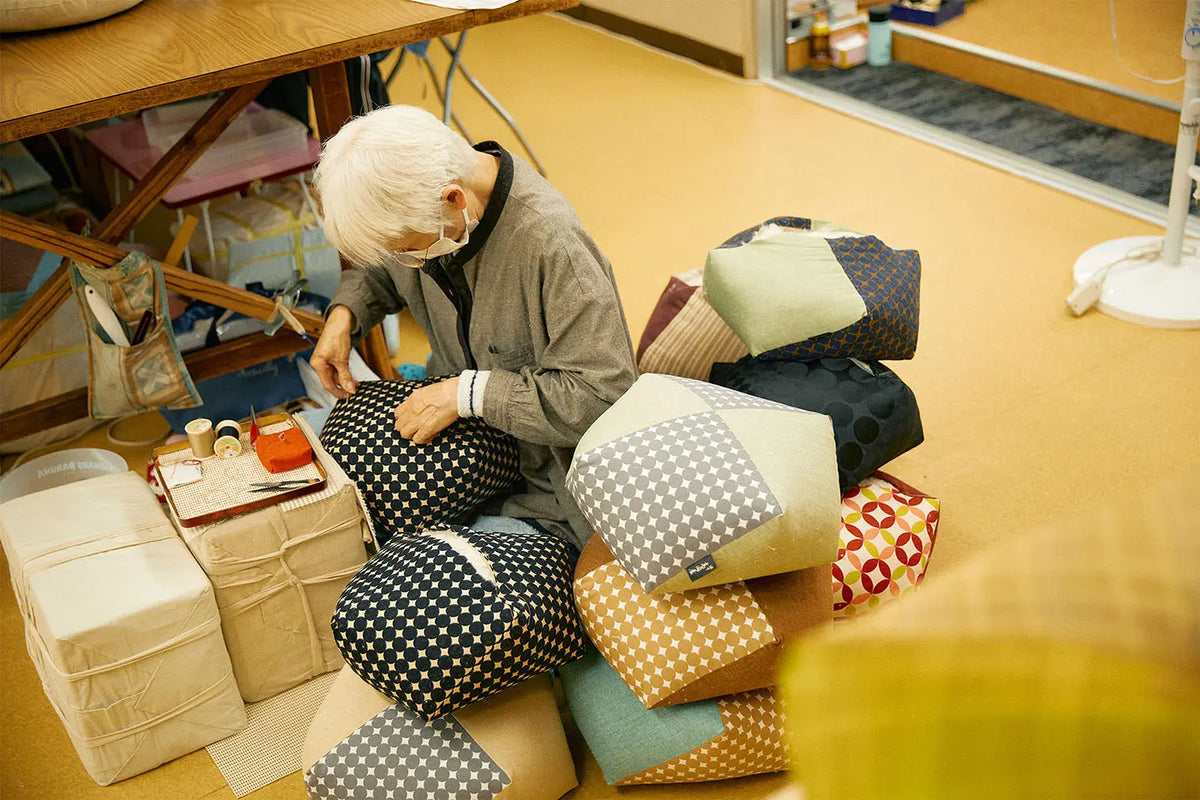
From Kyoto to the World: Sharing the Spirit of Relaxation
Because most production is done in-house, output is limited. Yet Koichiro Takaoka envisions growing the culture of relaxation: “There aren’t many young people entering the craft today, but I hope to build a business where those who love making things can help us share this culture of comfort.”
He also sees global potential. Just as Japanese customs like removing shoes at the entrance are being adopted abroad, perhaps one day lying on the floor with a cushion will become natural overseas. Through kangū, he hopes to inspire people worldwide to say, “Relaxing on the floor feels good.”
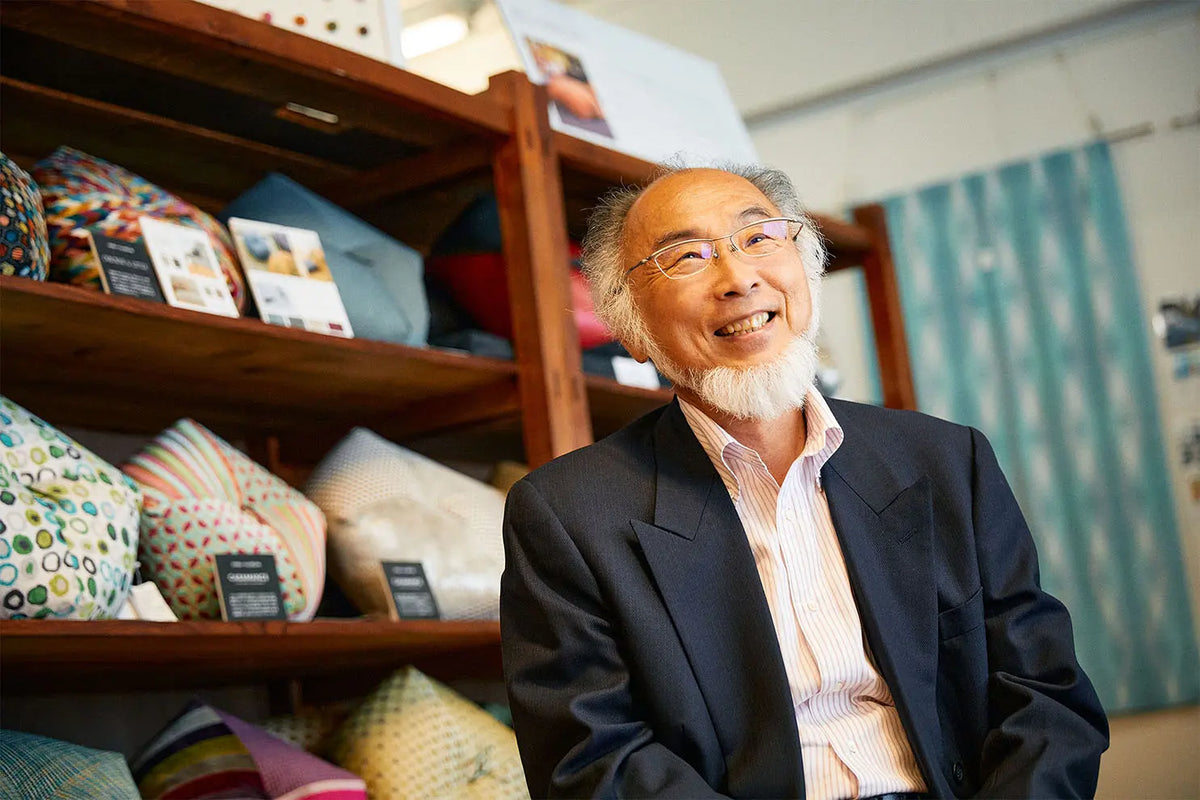
President Koichiro Takaoka.
Even now, Rakuchu Takaoka-ya continues to create new designs that blend tradition with innovation. With their dedication to handmade comfort, the day may come when Japanese-style relaxation becomes a global lifestyle standard.
Interview: Takuya Arata Photography: Daiki Morishita Text: Kento Onishi





